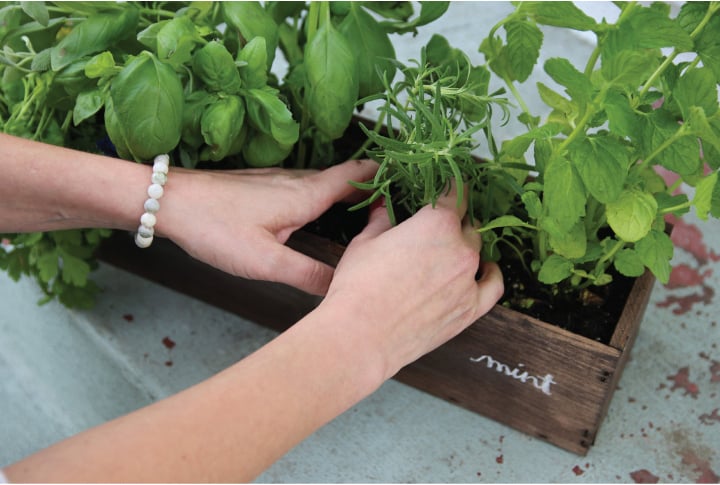Table of Contents
Do you wish to have direct access to delicious, fresh herbs to spruce up your home-cooked meal? Cultivating an indoor herb garden offers many advantages. With an indoor herb garden, you can add fresh herbs to any culinary dishes, and the garden can also serve as a kitchen decor element.
You can grow most herbs at home. But the herbs that really thrive well indoors include chives, basil, parsley, oregano, thyme, and rosemary. Indoor herb gardens can make the cooking process easier for you as you just need to clip some strings to add to your recipe or use them as a garnish.
You can plant herbs in herb pots or just about any container as long as the container has some kind of drainage provision. A indoor herb garden can be added to your kitchen using seedlings from a garden shop.
Step-By-Step Guide to Grow a Windowsill Herb Garden
We’ve prepared a step-by-step guide that will provide you with tips and tricks to cultivate a herb garden in your own house successfully.
1. Selecting the Right Spot
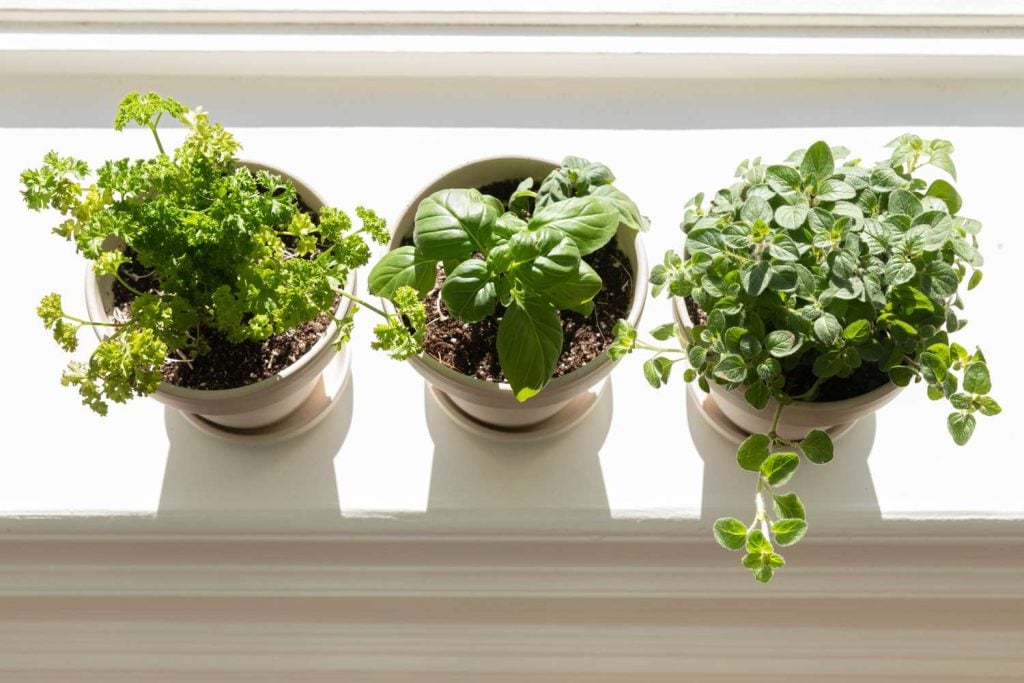
The first step is to select the right spot. If you wish to create a windowsill herb garden, select a windowsill that receives a sufficient amount of sunlight. This windowsill should ideally be the one in the kitchen since it will give you easy and quick access to herbs when you require them. In case the level of sunlight is not enough, you can always plan a herb garden in some other location in your house.
You will require a spot that gets a minimum of 6 hours of sunlight every day to promote the healthy growth of plants. If they don’t receive the right amount of sunlight, your plants might end up giving flavourless herbs, or sometimes you might get stunted growth. During winter, the growth of the plants might be slow. You can invest in a LED light or grow light during such times.
2. Choose Your Herbs
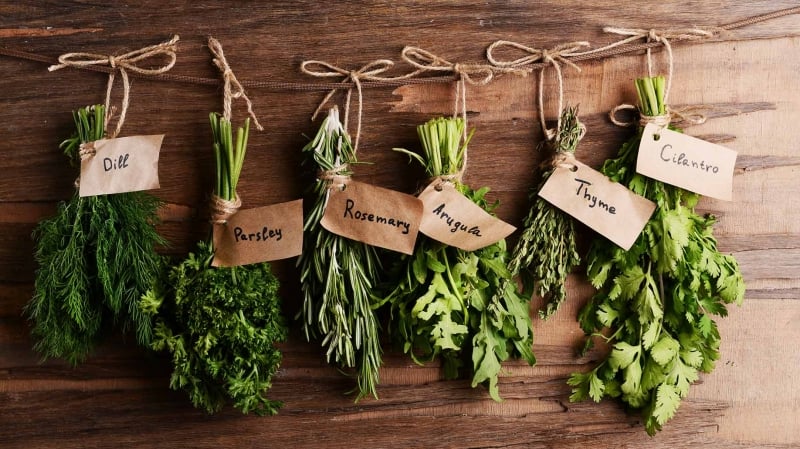
This is the most fun part-selecting the herbs that you wish to grow. While most herbs do well indoors, there are a few herbs that thrive better than others. A few common favorites for windowsill herb gardens are lemon thyme, common thyme, oregano, and chives. Herbs that you grow in a windowsill garden should offer some color and uses. The herbs mentioned above don’t usually grow very tall and can tolerate full light. A few other suggestions include basil, coriander, parsley, mint, rosemary, and sage.
3. Choose a Container with Good Drainage
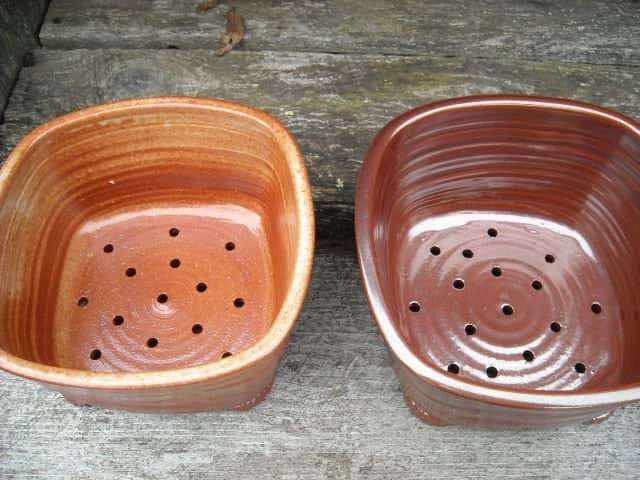
There are a variety of herb pots available in the market. You can plant your herbs in almost any container. The only thing that you need to ensure is that the container must be well-draining. The pots or containers also need a saucer or plastic protector or a tray under them to protect the surface.
You can find them at garden centres. You can decide the size of the container depending on the plant, but the smaller the container, the sooner you might have to replant. In case you plan to utilize non-typical containers like mason jars, you need to ensure that the bottom layer comprises pebbles in order to hold any excess moisture.
4. Plant Your Seeds
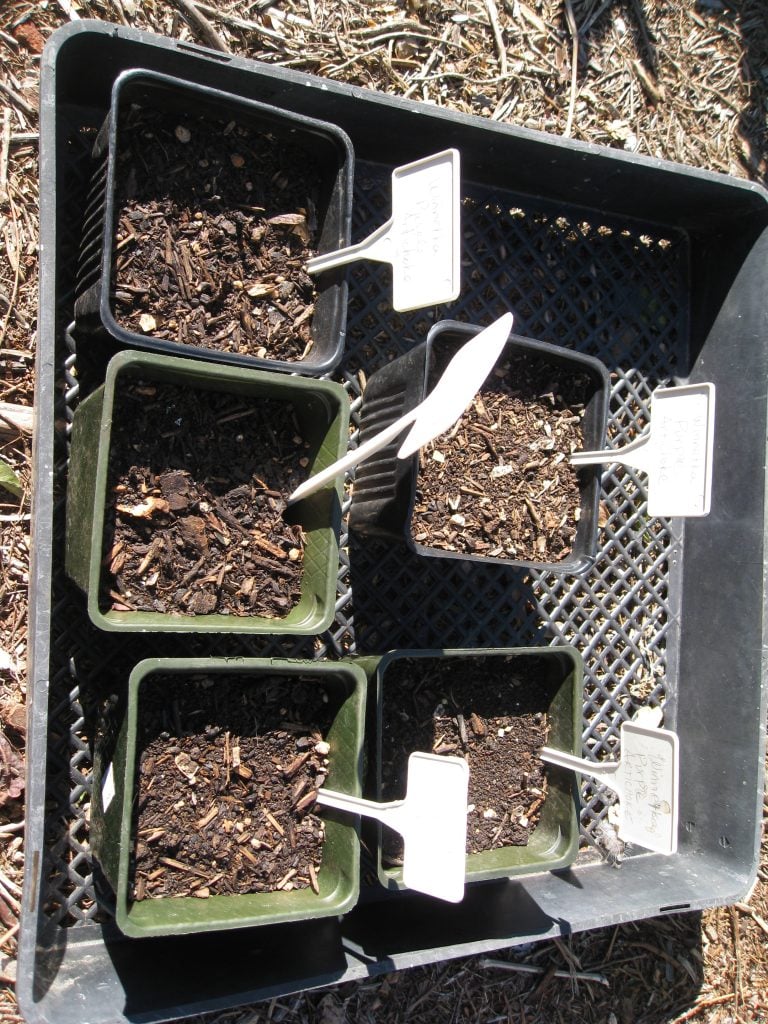
If you’re planning to sow the herbs from seeds, you should fill up the container to about two-thirds of its capacity with a potting mix. You can then sprinkle the seeds on the surface.Ensure that the seeds are distributed evenly. To do this, empty the seed packet into your palm, pinch some individual seeds, and scatter them evenly. After that, cover the seeds with soil and water generously.
In case you are planning to bring a herb plant from the store, the first thing that you need to do is pour some potting mix into the pot to start with. Ease the plant out of the container and slowly massage its roots in order to segregate them from the assumed clumped form. Place it in the new pot, ensuring that the roots are spread out. Fill in the gaps, if any, and water the plant thoroughly.
5. Cultivate the Growth
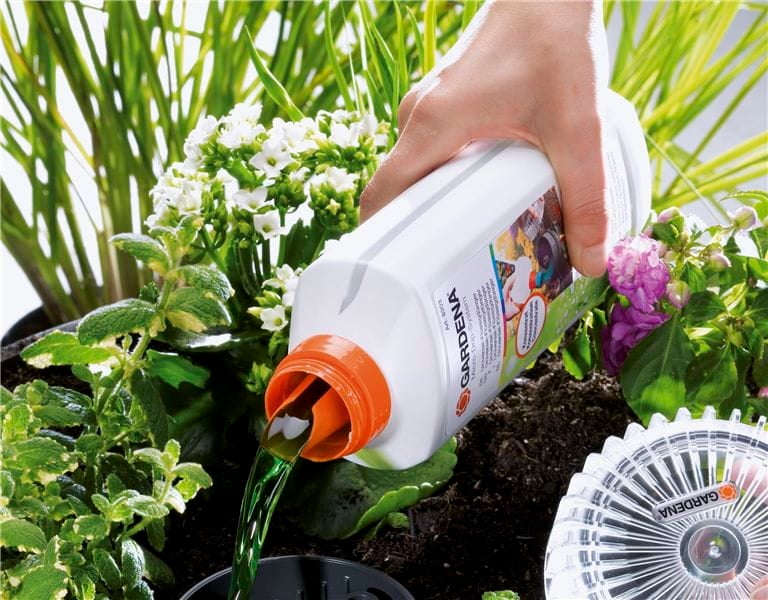
Herbs grow relatively faster and don’t need much care and maintenance. You can expect to see results within a couple of days. If you’re using store-bought herbs, they can be harvested almost immediately once they start showing signs of rejuvenation. Even seeds start showing the first shoots within a week or so. It is recommended to wait for a month before you start harvesting in order to avoid stripping off the herbs of their vitality prematurely.
These herbs do not require much water to grow well. To make sure that your plant is growing healthily, keep the soil moist consistently; however, it shouldn’t be waterlogged. Watering every few days is recommended.
However, if you live in a warm and dry region, water more frequently. If you feel doubtful, sink your finger into the soil up to two inches and feel the level of moisture. If it’s very dry, give your herbs some water.
You can fertilize the herbs once a month; however, this is not strictly necessary to keep the growth intact. The herbs that are extracted without any artificial help tend to retain a strong flavour.
6. Harvest Carefully
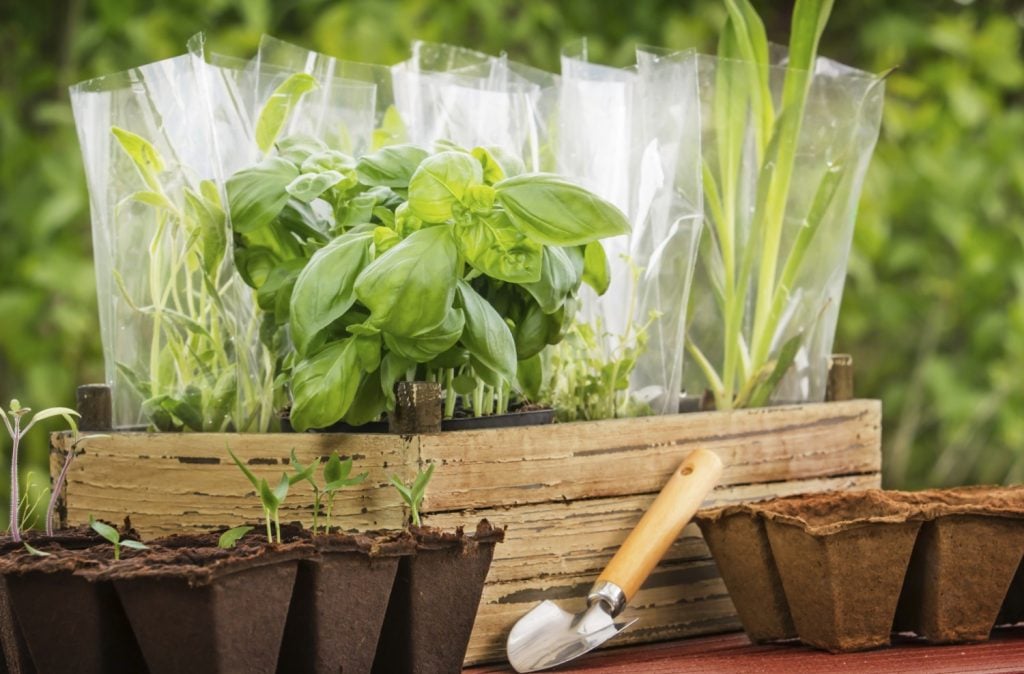
While harvesting the herbs, you’ll notice the more regularly you trim the herbs, the more vigorously the plants will grow. As per experts, you must not remove more than one-third of the foliage at any given time since it will cause stress to the plant or hamper its growth or even kill it completely. Harvesting little at a time but more frequently is ideal for maintaining plant growth while also ensuring you get access to a steady supply of herbs.
Another important factor to consider is where and how you pick the herbs. Some herb varieties like chives, coriander, and parsley must be picked from the edge of the plant. You must focus on larger leaves. You can work your way from the edge of the plant and gradually inwards. Other varieties like mint, basil, and rosemary usually have multiple stems shooting from the primary column.
In such a case, you should trim a full offshoot in one go and strip off the leaves. Harvesting the plant carefully in such a manner will prevent overwhelming the herb plant and will also ensure that it keeps giving you enough yields all year round.
7. Store the Herbs for Future
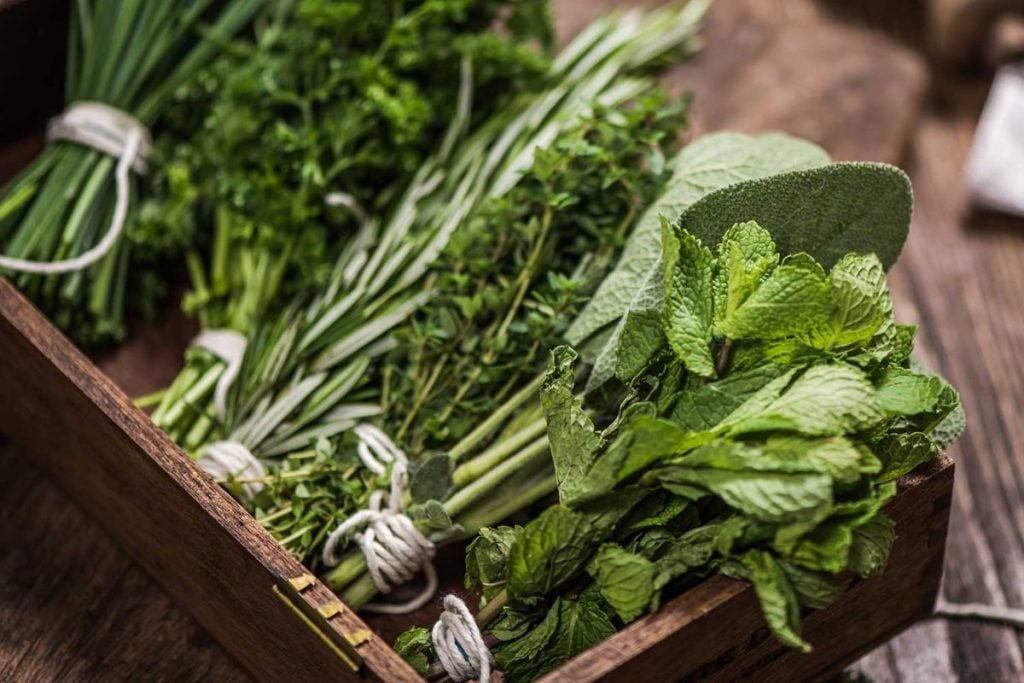
If you’re getting abundant harvests, you can consider storing them for future use. This is the best thing to do rather than allowing the herbs to wither away. If you don’t use all the herbs, they’ll go to waste and also prevent the herb plant from growing to its full potential. If you’re planning to store the herbs, pluck off the greenest and fresh herbs from the plant firmly but gently.
You can simply place the herbs in an ice tray and fill the tray with water. Freeze them overnight. Once the cubes solidify, empty them out of the trays and store them in Ziplock bags in your freezer. These frozen herb cubes can be used as an alternative to fresh herbs in the exact same quantity as any recipe would call for.
You can also freeze your herbs in oil if you like to cook savory dishes where you would not want to add water. For this, you simply need some good-quality extra virgin olive oil and chopped herbs. You can fill the tray with the oil and herbs and freeze them overnight. Then pop these cubes out carefully once frozen and seal them in plastic bags. Put them back in the freezer until they are ready to use. You can add these cubes to any recipe that has a savory or oil base.
Care Tips for Your Windowsill Herb Garden
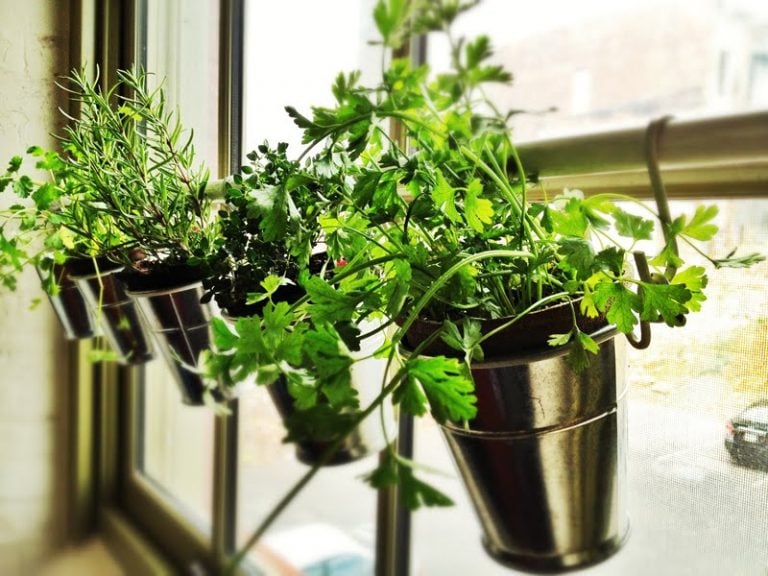
- If you don’t mind putting in a little extra effort, start your windowsill herb garden during any season. But if you wish to make things easy, consider planting a herb garden when the climate is warm.
- In case your herbs are producing very long stems, if you notice pale leaves on your plant, or if they bend towards the window, this might indicate that the plant is not receiving adequate sunlight. This is a good time to move the plant towards another window that is receiving enough sunlight. Or if you can’t find a good spot, you can also invest in a grow light.
- When you water the herb plant, water will drain out of the container or pot. To prevent the water from spilling over the windowsill, it is advised to keep a tray or saucer under each container or pot. Ensure that the tray or saucer is emptied out every time it is full. You can also fill it with pebbles to create more space between the plant and the accumulated water.
- On extremely cold nights, you might want to move your herb plants away from the window in order to avoid damage due to intense cold.
- There are a few herbs that require specific temperatures, like sage seeds. Sage seeds won’t grow healthily if you do not provide them with a temperature between 60 and 70 degrees Fahrenheit.
- Mist your plants once every day to maintain the humidity levels. If the air inside your house is very dry, get a humidifier and continue running it in the room where you are growing your herb plants.
- Lastly, make sure that you do not overcrowd your balcony with herbs, as this can slow down the growth of all the plants.
Conclusion
Indoor herb gardens provide fresh herbs whenever you want and also fill up your house with greenery and fragrance. We hope this guide will help you grow a herb garden successfully.
It is important to understand that no plant will live forever. Many herb plants are annual plants that will produce yields and then decline within a year.
In this case, you can replace the old plants with new ones. As the plant reaches maturity and starts to decline, start off with a new batch of seeds so that you never run out of fresh herbs.
Frequently Asked Questions
What Herbs Grow Well on a Window Sill?
Some good varieties to grow on a windowsill are lemon thyme, common thyme, sage, rosemary, coriander, parsley, chives, and basil. You can also consider growing herbs like lavender, chamomile, mint, lemon balm, etc., to make your windowsill a spot for fresh herbs to add to your dishes and also for some beautiful fragrances to add to your kitchen.
How Do You Keep Window Herbs Alive?
Most herbs need warmth to grow healthily. They need an adequate amount of sunlight, well-draining soil, and little water to thrive well and grow to their full potential.
How Do You Maintain a Window Herb Garden?
Indoor herb gardens have to be watered regularly and should never be allowed to dry out. You shouldn’t overwater them, either. Give them enough sunlight and if you feel the top layer of the soil has dried out, add some water.
What Soil is Best for Herbs?
A sandy-loam soil is the best soil for growing various herbs. This type of soil rarely gets waterlogged in winter and stays dry in summer. It is also naturally high in nutrients.

